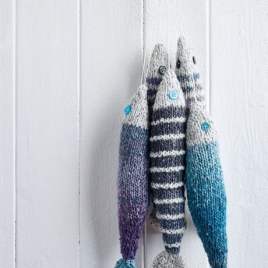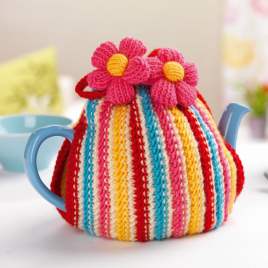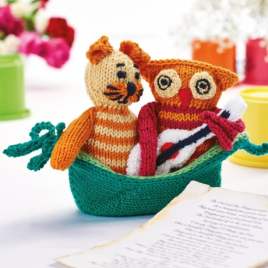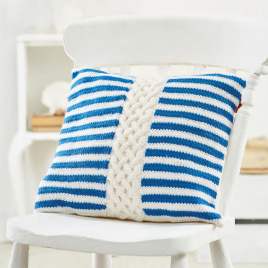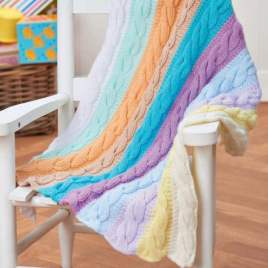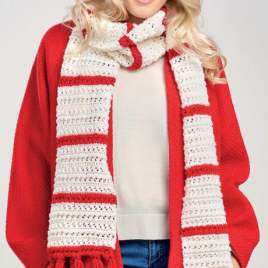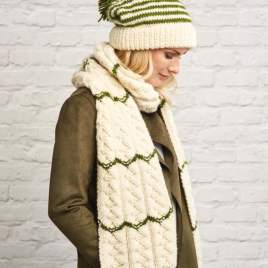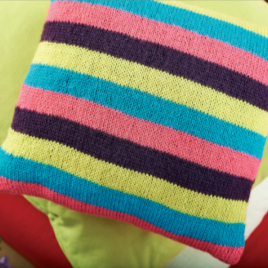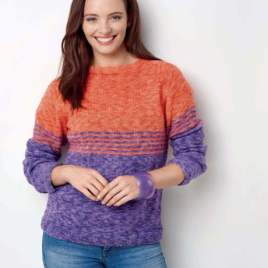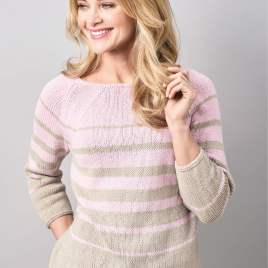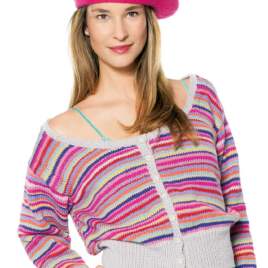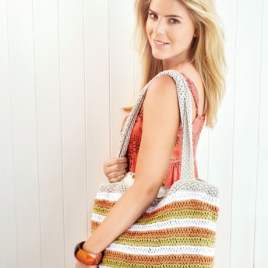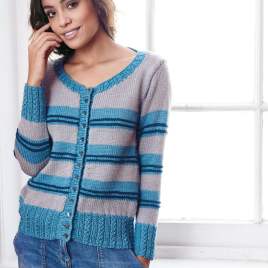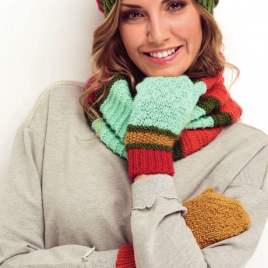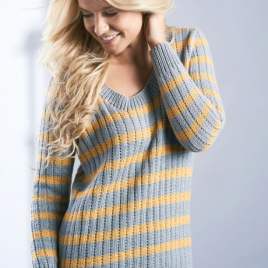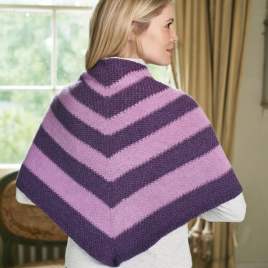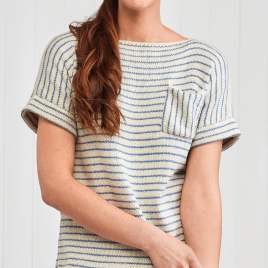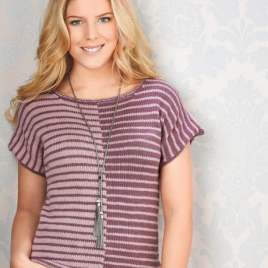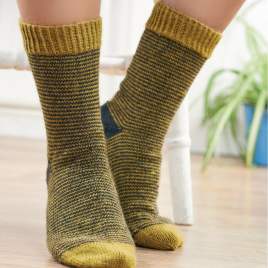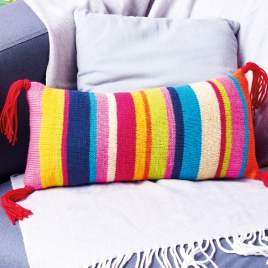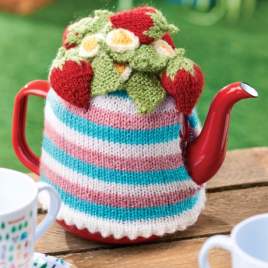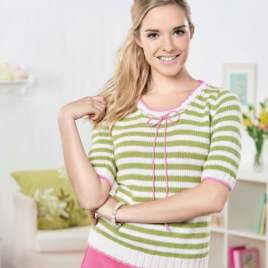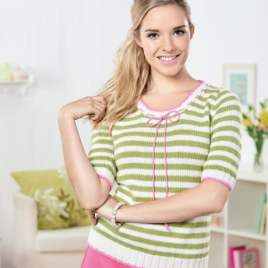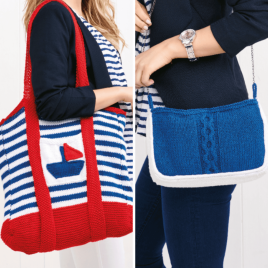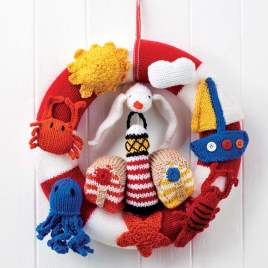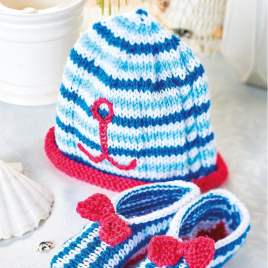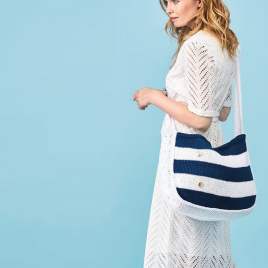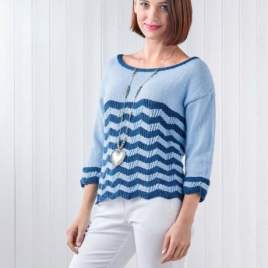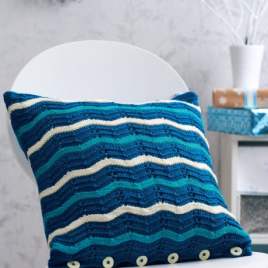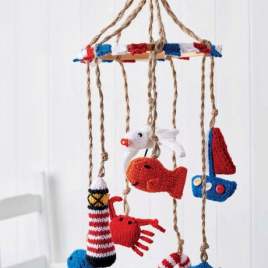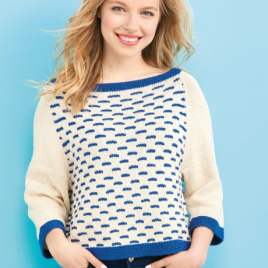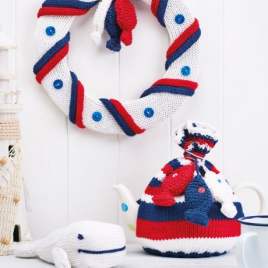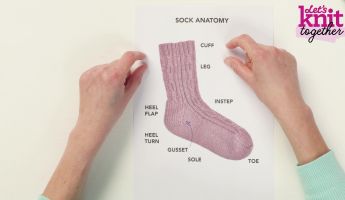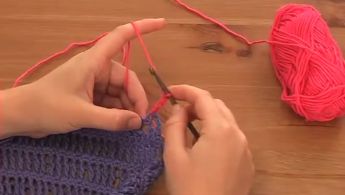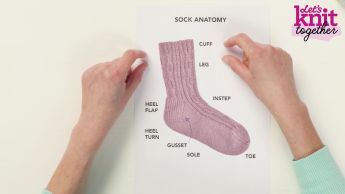How to: work stripes (carrying yarn up side)
video by
Let's Knit Together
- Overview
- Practical Guides
Whether plain or patterned, stripes are a great way to add colour. With narrow bands, it's best to carry yarn up the side to use again, and this minimises yarn tails, too.
Ideally, carry no more than a couple of strands up the side to avoid bulking out any seams on these edges.
For wide bands of colour it makes sense to cut and join in new yarn colours at the start of the new row, but for bands that are worked close together, taking the yarn up the side can be the best option. Working in this way saves time and yarn, especially on a narrow, two-colour, stripe sequence. In stocking stitch, colour changes are usually made at the start of a knit row for a clearly defined colour change, but you’ll see on the purl side that the new colour is banded with the previous one. This can be put to good use, depending on the pattern, so just make sure your yarn change is made on the correct row. To change yarn the first time on a stocking stitch knit row, insert the right-hand needle knitwise into the first stitch. Lay a loop of new colour over the tip and pull though. You can use a slip knot to loop over your needle tip if you prefer, but ensure the knot doesn’t pull through to the front. The first stitch may seem loose, but will be secured once purled across at the end of the next row. When you need to carry a colour up the side, twist it together just once with the main yarn in use by bringing the main strand up from underneath and to the right, before making the first stitch.This lifts the strand of the unused colour up, while keeping it close to the back of the knitting. When using a colour again after it has been carried up the side, make sure it is not too tight before you use it again, otherwise it may pucker one side of your knitting and make sewing up more tricky. If it’s too loose, simply pull it so it lies almost flat, and then these loops will lie more neatly in any seam. Bear in mind that it’s only wise to carry a colour if the next repeat is just a few rows away, as the unused yarn will need to be twisted around the current one on alternate rows. When sewing up striped edges, make sure you work through the knitted stitches rather than the loops of carried yarn, to avoid insecure gappy seams.







